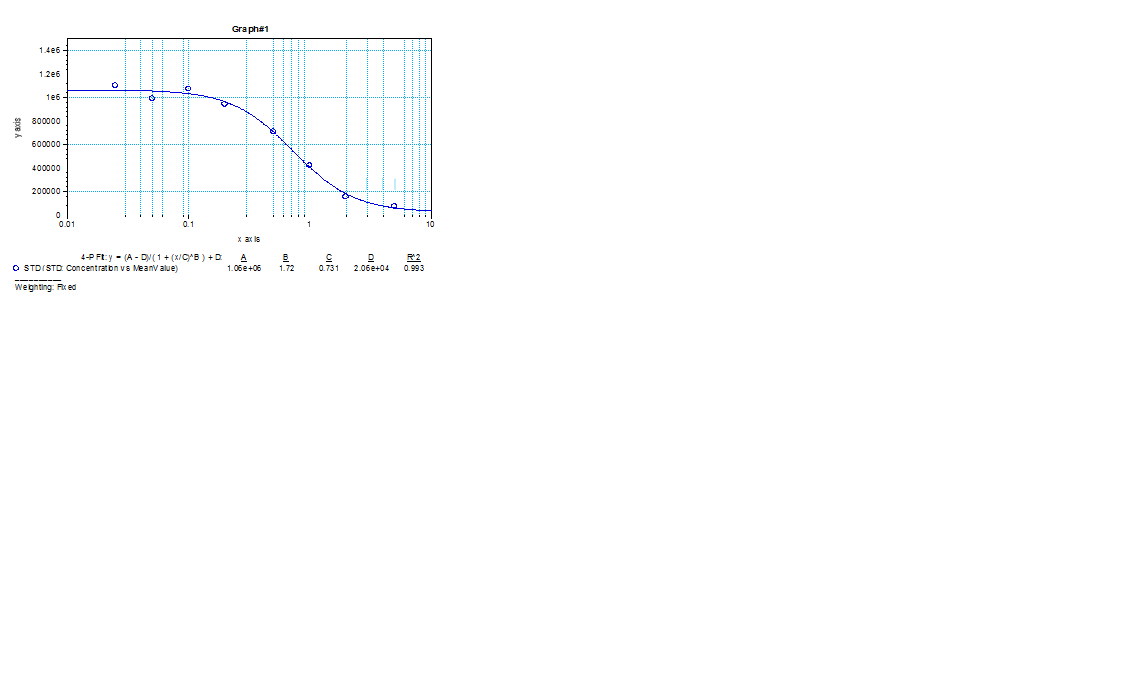Recombinant Human Complement Component C1s Protein, CF
Recombinant Human Complement Component C1s Protein, CF Summary
Product Specifications
Met1-Asp688, with a C-terminal 6-His tag
Analysis
Product Datasheets
Carrier Free
CF stands for Carrier Free (CF). We typically add Bovine Serum Albumin (BSA) as a carrier protein to our recombinant proteins. Adding a carrier protein enhances protein stability, increases shelf-life, and allows the recombinant protein to be stored at a more dilute concentration. The carrier free version does not contain BSA.
In general, we advise purchasing the recombinant protein with BSA for use in cell or tissue culture, or as an ELISA standard. In contrast, the carrier free protein is recommended for applications, in which the presence of BSA could interfere.
2060-SE
| Formulation | Supplied as a 0.2 μm filtered solution in Tris, NaCl, CaCl2 and Glycerol. |
| Shipping | The product is shipped with polar packs. Upon receipt, store it immediately at the temperature recommended below. |
| Stability & Storage: | Use a manual defrost freezer and avoid repeated freeze-thaw cycles.
|
Assay Procedure
- Assay Buffer: 50 mM Tris, 250 mM NaCl, pH 8.0
- Recombinant Human Complement Component C1s (rhC1s) (Catalog # 2060-SE)
- Substrate: N-Carbobenzyloxy-Lys-ThioBenzyl ester (Z-K-SBzl) (Bachem, Catalog # M-1300), 10 mM stock in DMSO
- 5,5’Dithio-bis(2-nitrobenzoic acid) (DTNB) (Sigma, Catalog # D-8130), 10 mM stock in DMSO
- 96-well Clear Plate (Costar, Catalog # 92592)
- Plate Reader (Model: SpectraMax Plus by Molecular Devices) or equivalent
- Dilute rhC1s to 0.2 ng/μL in Assay Buffer.
- Dilute Substrate to 1000 μM containing 200 μM DTNB in Assay Buffer.
- Load in plate, 50 μL of 0.2 ng/μL rhC1s, and start the reaction by adding 50 μL of 1000 μM Substrate/200 μM DTNB mixture to wells. Include a Substrate Blank containing 50 μL Assay Buffer and 50 μL of 1000 μM Substrate/200 μM DTNB mixture.
- Read in kinetic mode for 5 minutes at absorbance of 405 nM.
- Calculate Specific Activity:
|
Specific Activity (pmol/min/µg) = |
Adjusted Vmax* (OD/min) x well volume (L) x 1012 pmol/mol |
| ext. coeff** (M-1cm-1) x path corr.*** (cm) x amount of enzyme (µg) |
*Adjusted for Substrate Blank
**Using the extinction coefficient 13260 M-1cm-1
***Using the path correction 0.320 cm
Note: the output of many spectrophotometers is in mOD Per Well:
- rhC1s: 0.010 μg
- DTNB: 100 μM
- Substrate: 500 μM
Reconstitution Calculator
Background: Complement Component C1s
The classical complement pathway plays a major role in innate immunity against infection. This pathway is triggered by C1, a multimolecular complex composed of the recognition protein C1q and two serine proteases, C1r and C1s. Following the C1q recognition, C1r is autoactivated, and in turn activates C1s, which cleaves C4 and C2, the C1 substrates (1). Both C1r and C1s activation involve cleavage of a specific Arg-Ile bond, converting single-chain proenzymes into active proteases of disulfide bond-linked chains (A and B) (2). The A chains contain multiple domains in the order of CUB1-EGF-CUB2-CCP1-CCP2-Activation Peptide. The B chains contain the serine protease catalytic domain. The full-length (amino acid residues 1-688) of human C1s was expressed (3-5). The purified protein corresponded to the processed active form, with A and B chains starting at residue Glu16 and Ile438, respectively.
- Arlaud, G.J. et al. (2002) Biochem. Soc. Trans. 30:1001.
- Lacroix, M. et al. (2001) J. Biol. Chem. 276:36233.
- Tosi, M. et al. (1987) Biochemistry 26:8516.
- Mackinnon, C.M. et al. (1987) Eur. J. Biochem. 169:547.
- Kusumoto, H. et al. (1988) Proc. Natl. Acad. Sci. USA 85:7307.
Citations for Recombinant Human Complement Component C1s Protein, CF
R&D Systems personnel manually curate a database that contains references using R&D Systems products. The data collected includes not only links to publications in PubMed, but also provides information about sample types, species, and experimental conditions.
2
Citations: Showing 1 - 2
Filter your results:
Filter by:
-
A tick C1q protein alters infectivity of the Lyme disease agent by modulating interferon gamma
Authors: X Tang, G Arora, J Matias, T Hart, Y Cui, E Fikrig
Cell Reports, 2022-11-22;41(8):111673.
Species: Bacteria - Borrelia burgdorferi
Sample Types: Recombinant Protein
Applications: ELISA Capture -
Complement C1 esterase inhibitor levels linked to infections and contaminated heparin-associated adverse events.
Authors: Zhou ZH, Chen T, Arora K
PLoS ONE, 2012-04-13;7(4):e34978.
Species: Human
Sample Types: Recombinant Protein
Applications: Binding Assay
FAQs
No product specific FAQs exist for this product, however you may
View all Proteins and Enzyme FAQsReviews for Recombinant Human Complement Component C1s Protein, CF
Average Rating: 5 (Based on 1 Review)
Have you used Recombinant Human Complement Component C1s Protein, CF?
Submit a review and receive an Amazon gift card.
$25/€18/£15/$25CAN/¥75 Yuan/¥2500 Yen for a review with an image
$10/€7/£6/$10 CAD/¥70 Yuan/¥1110 Yen for a review without an image
Filter by:


